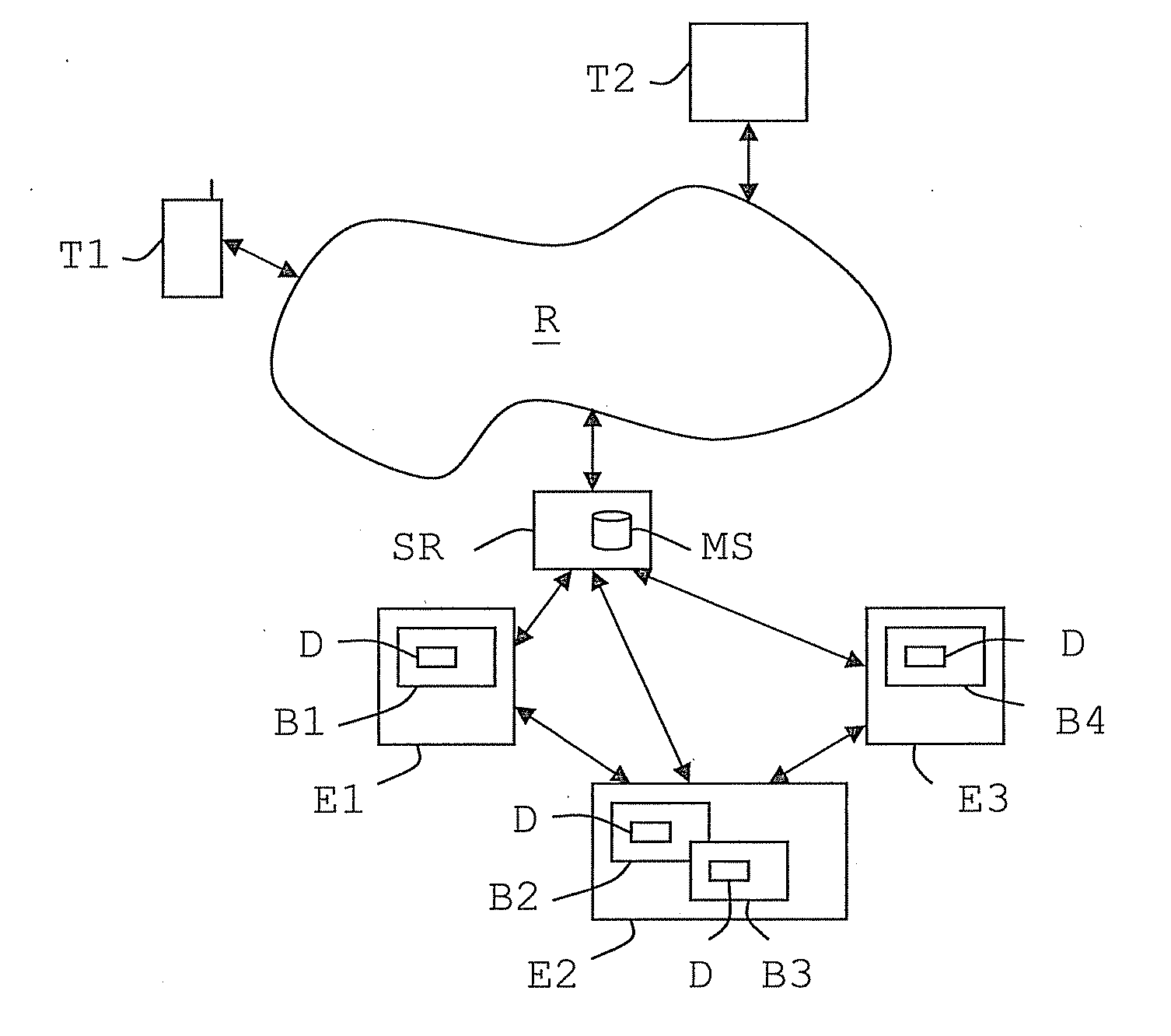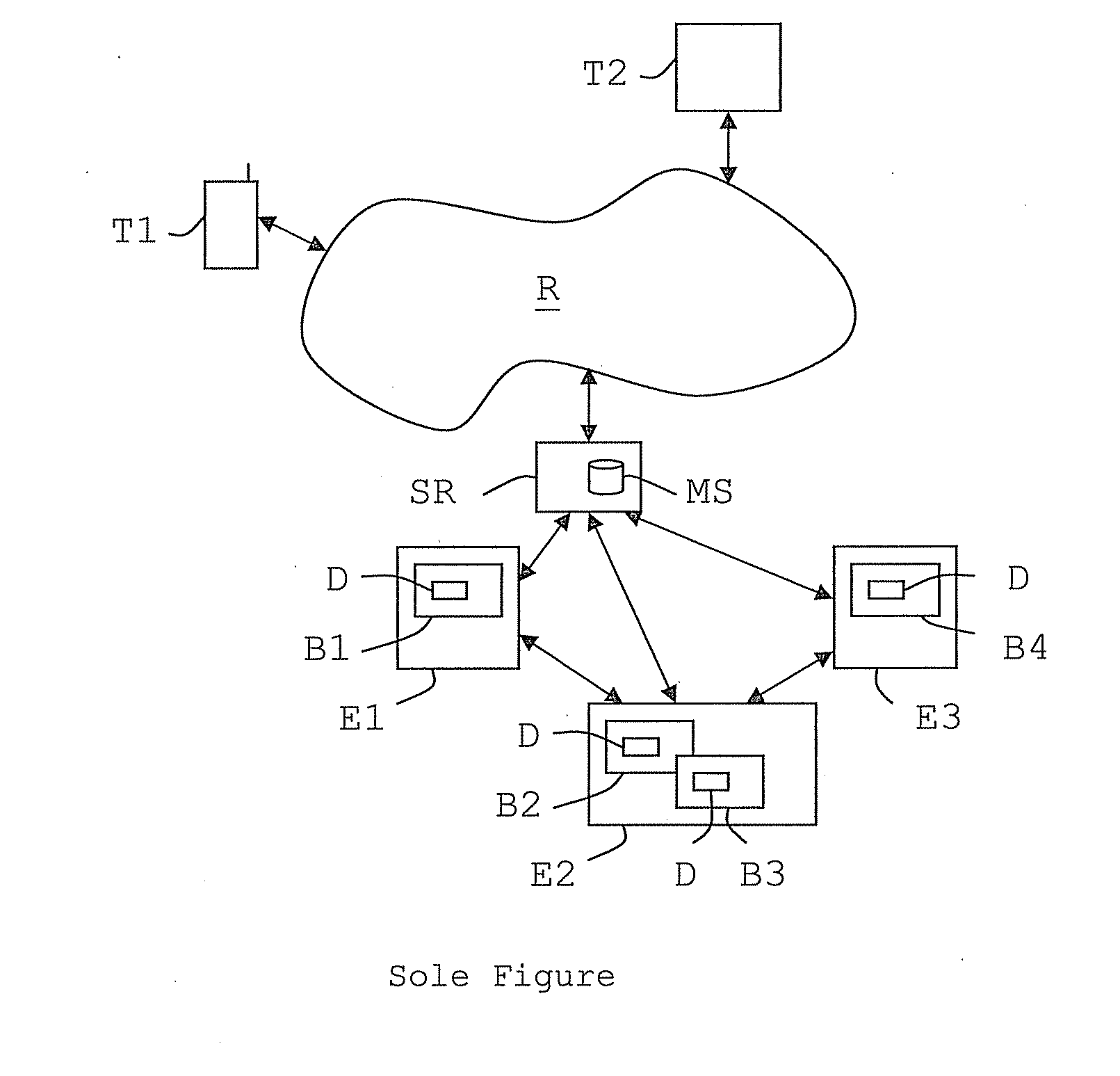Method For Processing Initial SIP Requests By Backends Of A SIP Cluster In The Presence Of A Fault, And Associated Processing Device
a backend and cluster technology, applied in the field of processing so-called initial sip requests, can solve the problems of large number of initial sip request retransmissions, insufficient call identifiers, and inability to handle, so as to reduce the number of messages exchanged
- Summary
- Abstract
- Description
- Claims
- Application Information
AI Technical Summary
Benefits of technology
Problems solved by technology
Method used
Image
Examples
Embodiment Construction
[0028]It is an object of the invention to make it possible to process initial SIP requests within a SIP cluster of end processing software modules (Bi), hereafter known as backends and operating for an (end) application within a communication network (R).
[0029]It should be noted that the invention related to any type of communication network, whether it is wired or wireless (or radio). As a reminder, the SIP protocol offers independence with respect to the protocol's transport layer.
[0030]The sole FIGURE schematically depicts a communication network R to which are connected communication terminals Tk, belonging to users, and a server SR acting as an input load balancer for a cluster of SIP backends BI (hereafter known as a SIP cluster).
[0031]Here, the term “communication terminal” refers to any communication equipment that can connect to a communication network and that has at least one SIP (“Session Initiation Protocol”) client capable of dialoguing with a SIP server during a SIP s...
PUM
 Login to View More
Login to View More Abstract
Description
Claims
Application Information
 Login to View More
Login to View More - R&D
- Intellectual Property
- Life Sciences
- Materials
- Tech Scout
- Unparalleled Data Quality
- Higher Quality Content
- 60% Fewer Hallucinations
Browse by: Latest US Patents, China's latest patents, Technical Efficacy Thesaurus, Application Domain, Technology Topic, Popular Technical Reports.
© 2025 PatSnap. All rights reserved.Legal|Privacy policy|Modern Slavery Act Transparency Statement|Sitemap|About US| Contact US: help@patsnap.com


